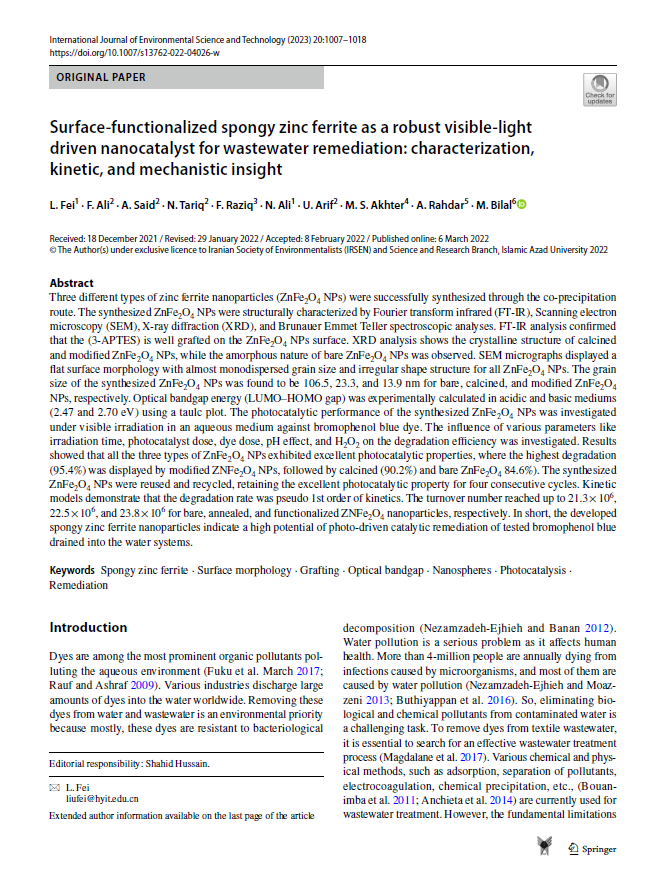Document
Thermally induced oxygen related defects in eco-friendly ZnFe2O4 nanoparticles for enhanced wastewater treatment efficiencies
Linked Agent
Younis , A, Author
Hazeem , L, Author
Sehar , S, Author
Rashdan , S, Author
Shaikh , M.N, Author
Albuflasa , H, Author
Hankins , N.P, Author
Title of Periodical
Chemosphere
Country of Publication
Kingdom of Bahrain
Place Published
sakhir, bahrain
Publisher
University of Bahrain
Date Issued
2022
Language
English
Subject
English Abstract
ABSTRACT:
Herein, a simple but highly effective strategy of thermal annealing to modulate oxygen vacancies related defects in ZnFe2O4 (ZFO) nanoparticles for obtaining enhanced wastewater treatment efficiencies is reported. The asprepared nanoparticles were thermally annealed at three different temperatures (500 ◦C, 600 ◦C and 700 ◦C) and their phase purity was confirmed by X-ray diffraction (XRD). All samples were found to exhibit pure phases of ZFO with different crystallite sizes ranging from 10 nm to 25 nm. The transmission electron microscope (TEM) images showed well dispersed nanoparticles and a strong correlation of grain size growth with annealing temperature was established. The optical absorption and emission characteristics were estimated through UV–visible and Photoluminescence (PL) spectroscopy. Raman spectroscopy and X-ray Photoelectron Spectroscopy (XPS) confirmed the variation of oxygen vacancies in the synthesized samples’ lattice. The photocatalytic activities of all samples were investigated and the highest efficiencies were recorded for the ZFO samples annealed at 500 ◦C. Under high salinity condition, the organic dye degradation efficiency of the same sample remained the highest among all. The excellent dye degradation abilities in ZFO samples can be attributed to the abundance of oxygen vacancies in the crystal lattice that slow down the recombination rate during the photocatalysis process.
Moreover, cytotoxicity tests revealed that all prepared ZFO samples showed insignificant cell structure effects on Picochlorum sp microalgae, as verified by Fourier-transform infrared (FTIR) spectroscopy. On the other hand, no
Member of
Identifier
https://digitalrepository.uob.edu.bh/id/73e51f56-fa4b-4454-84f6-bec28db6cc98
Same Subject
